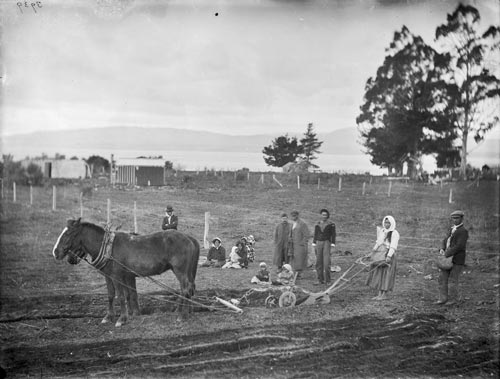
In the early 20th century most Māori lived in rural areas. This makes it difficult to compare their standard of living with Pākehā, who were either urban dwellers or commercial farmers. As in this photograph, probably taken on the East Coast of the North Island about 1900, most Māori belonged to interdependent family groups who worked together on subsistence holdings, and shared food and lodging. They largely existed outside the formal labour market.
Using this item
Alexander Turnbull Library
Reference:
1/1-003133
Permission of the Alexander Turnbull Library, National Library of New Zealand, Te Puna Mātauranga o Aotearoa, must be obtained before any re-use of this image.






Add new comment